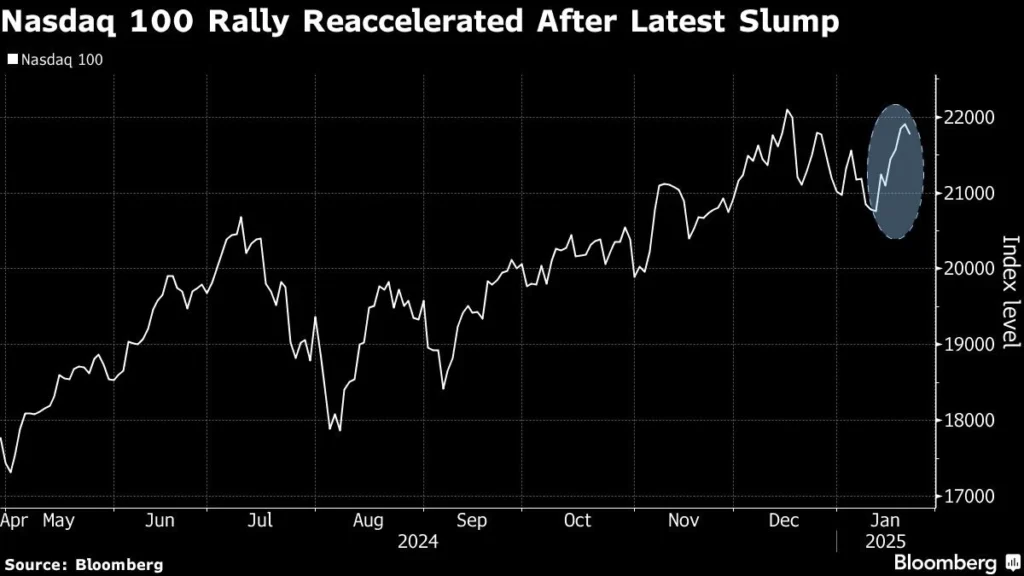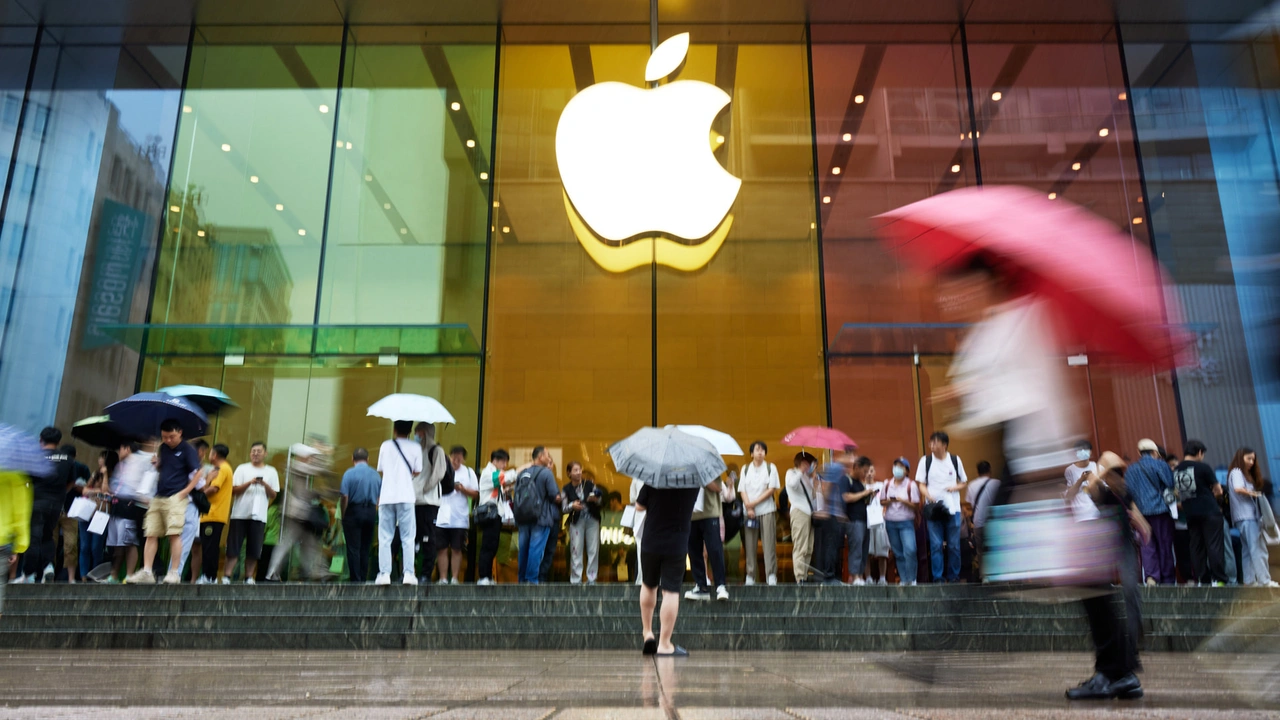DeepSeek is now considered a “major threat” to the US market, as a Chinese company can build superior models at a much lower cost.
LLMs (Large Language Models) are the foundation of generative AI chatbots like ChatGPT. In the industry, the number of parameters plays a key role in enabling LLMs to adapt to more complex data patterns and make accurate language predictions.
However, DeepSeek V3, a model from a startup based in Hangzhou, China, surprised the tech world by achieving 671 billion parameters. Meanwhile, the startup only spent two months training the model at a cost of $5.58 million.
In comparison, DeepSeek uses significantly fewer computational resources than models developed by major tech companies like Meta (Facebook’s parent company) and OpenAI (creator of ChatGPT).
This indirectly caused a dramatic drop in the stock prices of US AI companies. By the end of trading on January 27th, Nvidia’s stock price had fallen by 24%, wiping out $589 billion in market cap, a record for the industry, according to Bloomberg.
Shaking Silicon Valley
Since DeepSeek, the Chinese AI startup, announced the launch of its R1 model on January 20th, many respected figures in the field have commented on the powerful model built at a low cost.
The comments center around DeepSeek’s achievement and the significance of the R1’s debut in the AI market. Venture capitalist Marc Andreessen is one example, calling DeepSeek “one of the most impressive breakthroughs” he’s ever seen.
According to TechCrunch, R1 outperformed OpenAI’s o1 on evaluation standards like AIME, MATH-500, and SWE-bench Verified. At the same time, one of their models only cost $5.6 million to train, compared to the hundreds of millions spent by top US companies to train their models.
This raises questions about the true value of companies specializing in selling GPUs like Nvidia, which led the global AI stock boom. The 24% drop in Nvidia’s stock price marks its worst day since March 2020. The performance of the company’s stock is also alarmingly weak, significantly below its 200-day moving average.
In Europe, tech stocks led the market downturn, with shares of chipmaker ASML Holding falling 11%.
The Cboe Volatility Index (VIX) also surged. If these declines hold, the Nasdaq 100 and the European tech index Stoxx 600 could lose about $1 trillion in market capitalization.
“DeepSeek clearly demonstrates that it is possible to develop powerful AI models at a lower cost. This could disrupt the entire investment base of the AI supply chain, which has been driven by massive spending from a few top tech companies,” said Vey-Sern Ling, CEO of Union Bancaire Privée.
A Game-Changer
DeepSeek’s emergence raises several questions about the effectiveness of the massive investment in AI infrastructure by US companies. Nvidia has seen its market value drop by nearly $400 billion, the largest decrease ever recorded for a single company.

The Financial Times compares DeepSeek to AI’s “Sputnik moment,” referring to the event when the Soviet Union launched the first satellite into orbit, shaking the United States.
Although CEO Liang Wenfeng told the Chinese Prime Minister that US export restrictions are still creating challenges for research, DeepSeek has succeeded with R1 despite sanctions.
Along with ByteDance, the owner of TikTok, DeepSeek is known for offering some of the highest salaries for AI engineers in China, with offices in Hangzhou and Beijing.
In a May 2023 interview with online news outlet 36Kr, Liang revealed that DeepSeek prioritizes hiring young talent in the AI field, from recent graduates to those just starting their careers.
This policy reflects the company’s focus on capability over experience. “Our core technical positions are mostly filled by recent graduates or individuals with just one or two years of work experience,” Liang said.
DeepSeek’s success demonstrates that there are no real barriers when it comes to developing AI.
“The first person to train a model has to invest a lot of resources to achieve it. But later entrants can do it cheaper and faster,” said Ritwik Gupta, a senior AI policy researcher at the University of California. MIT Technology Review suggests that DeepSeek’s success shows that sanctions are “pushing startups to innovate by prioritizing efficiency, resource sharing, and collaboration.”
In 2023, DeepSeek spun off from the hedge fund High Flyer-Quant. The founder of High Flyer-Quant, Liang Wenfeng, who was trained in AI at Zhejiang University, is also behind DeepSeek.
After Washington banned Nvidia from exporting its most powerful chips to China, domestic AI companies had to find creative ways to maximize the computing power of the limited chips available locally.
This is a problem that Wenfeng’s team had already solved, as they were very skilled at using Nvidia chips to profit from stock trading.
“DeepSeek’s engineers know how to harness the potential of these GPUs, even if they aren’t the latest models,” an AI researcher familiar with DeepSeek told the Financial Times.
Industry insiders believe that DeepSeek’s sole focus on research has made it a dangerous competitor because they are willing to share breakthroughs rather than protect them for commercial profit.
Liang Wenfeng, who is directly involved in DeepSeek’s research, uses the profits from the High Flyer-Quant hedge fund to pay top salaries to AI talent.
Along with ByteDance — the company behind TikTok — DeepSeek is known for offering the highest salaries to AI engineers in China, with offices in Hangzhou and Beijing.
According to a revelation by Liang in an interview with online news outlet 36Kr in May 2023, DeepSeek prioritizes hiring young talent in the AI field, from recent graduates to those just starting their careers.
This policy clearly reflects the company’s focus on potential over experience. “Our core technical positions are mostly filled by recent graduates or individuals with just one or two years of work experience,” Liang said.
DeepSeek’s success is proof that there are no real barriers when it comes to the ability to develop AI.
“The first person to train models has to invest a lot of resources to do so. But later entrants can achieve this cheaper and faster,” said Ritwik Gupta, an AI policy researcher at the University of California.




